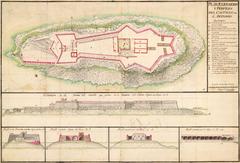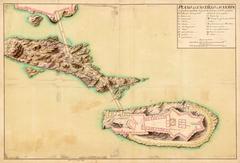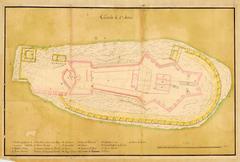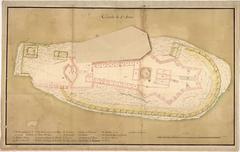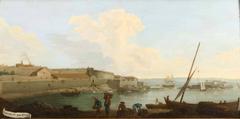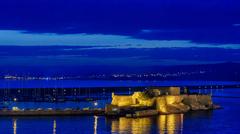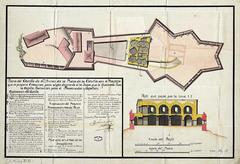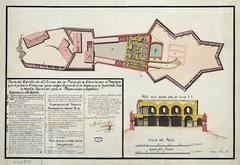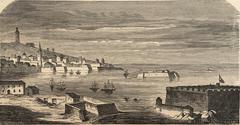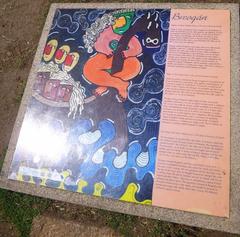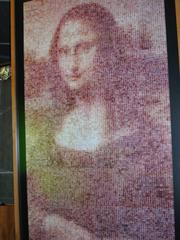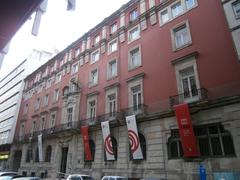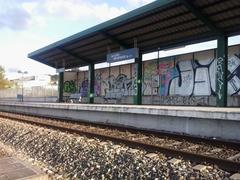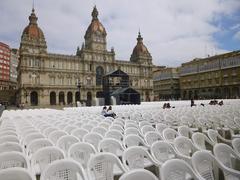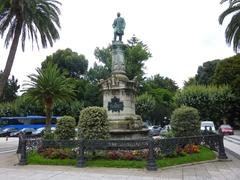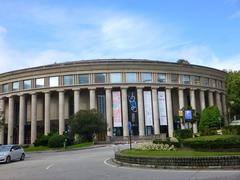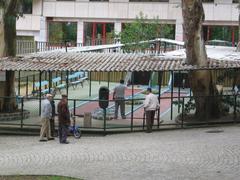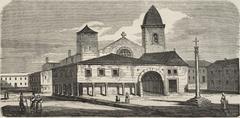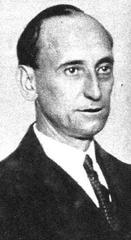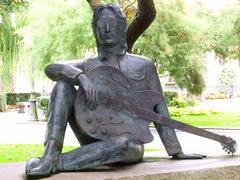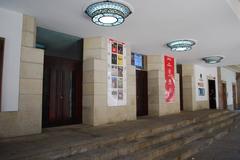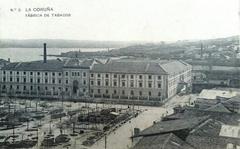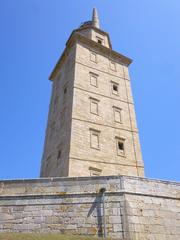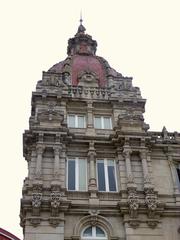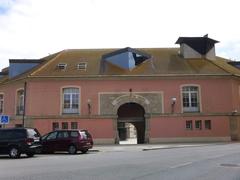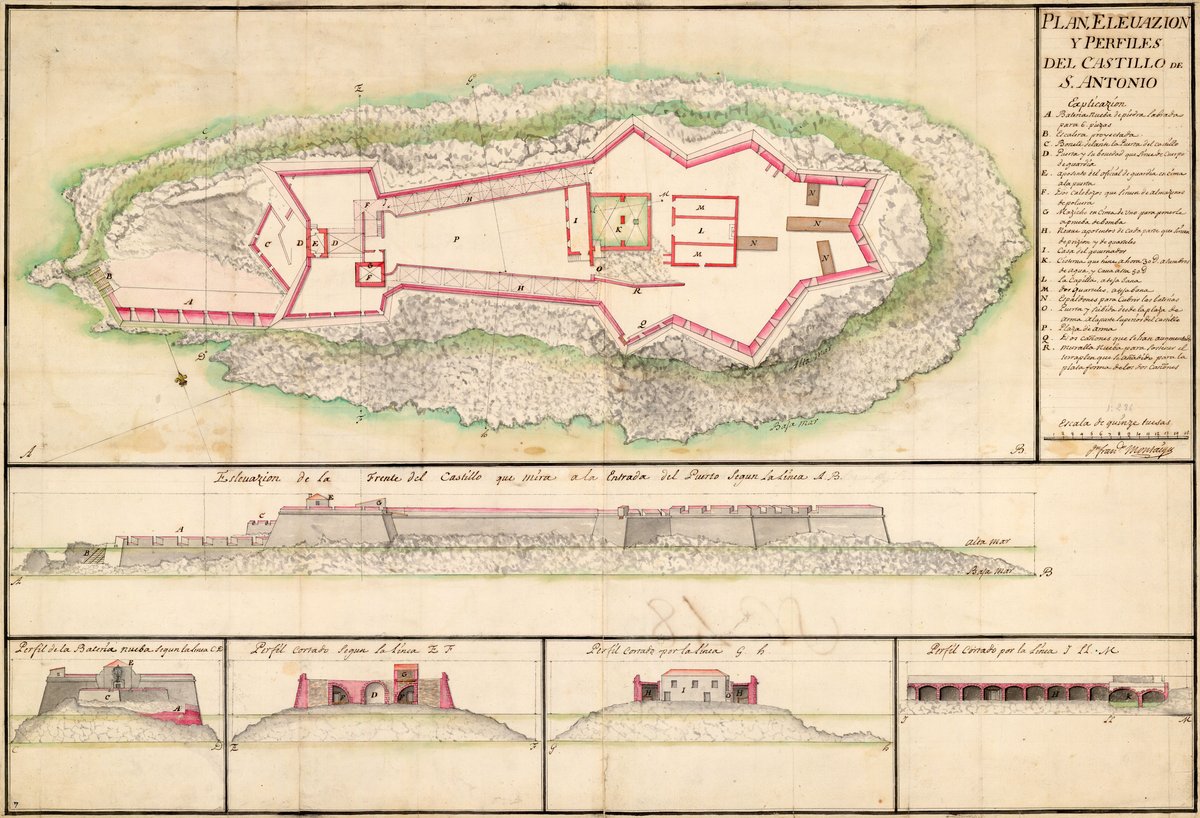
Castillo de San Antón: Comprehensive Guide to Visiting Hours, Tickets, and Historical Highlights in A Coruña
Date: 14/06/2025
Introduction
Castillo de San Antón, perched on a small peninsula at the entrance to A Coruña’s harbor, is a striking symbol of the city’s maritime legacy and cultural evolution. Built in the late 16th century to defend the port against naval threats, this fortress has borne witness to pivotal moments in Galician and Spanish history. Over time, it has served as a military bastion, quarantine station, and prison—before its transformation into the Museo Arqueológico e Histórico de A Coruña, which today houses a remarkable collection spanning from prehistory through Roman times and into the modern era. Its thick granite walls, bastions, and vaulted casemates are a testament to centuries of military innovation.
Conveniently located close to other landmarks such as the Tower of Hercules and María Pita Square, Castillo de San Antón is a must-visit for history enthusiasts, families, and cultural explorers. This guide covers visiting hours, ticket information, guided tours, accessibility, and insider tips to help you make the most of your experience. For the latest updates and interactive resources, consult the official museum website and trusted tourism platforms (Wikipedia, Turismo Galicia, Castlepedia).
Historical Overview
Construction and Strategic Significance
Initiated in 1587 on the islet then known as Lila da Pena Grande, Castillo de San Antón was designed to protect A Coruña’s vital port from enemy fleets (Wikipedia). Its construction, overseen by engineer Fratín and Lieutenant Pedro Rodríguez Muñiz, repurposed stones from the city’s medieval walls and formed part of a strategic defense network with the nearby Castillo de Santa Cruz and the now-demolished Castillo de San Diego (Mundo Estrella Galicia; Galicia Máxica).
Notable Historical Events
Despite being unfinished during the 1589 English Armada attack led by Sir Francis Drake, the castle played a critical role in repelling the assault, aided by the local heroine María Pita (Spotting History; Holly Hits the Road). Completed by 1590, it later served as a quarantine station, prison, and place of exile for political prisoners such as Alessandro Malaspina and Juan Díaz Porlier (Elespanol). In 1949, it was declared a Monumento Histórico Artístico and became a museum in 1968 (Wikipedia).
Architectural Features
- Granite Walls and Bastions: The castle’s robust fortifications, designed to resist artillery, offer overlapping cannon fields and are punctuated by ramparts providing panoramic views of the harbor (Galicia Máxica).
- Cistern: A rock-hewn reservoir ensured water supply during sieges (Museos de Galicia).
- Governor’s House: Added in the 18th century, this neoclassical building includes a chapel and barracks (Wikipedia).
- Chapel and Sacristy: Home to the Virgin of the Rosary, the castle’s spiritual protector (Museos de Galicia).
- Vaulted Casemates and Dungeons: These spaces served as barracks and prison cells, adding to the site’s atmospheric history.
Over the centuries, the castle underwent several modifications to adapt to evolving military technology and, later, to accommodate its role as a museum (Galicia Máxica).
Museum Highlights
Archaeological Collections
- Prehistoric and Protohistoric Artifacts: Items from Castro de Baroña, Castro de Meirás, Dolmen de Dombate, and Castro de Elviña, including the solid gold Casco de Leiro helmet (1000–800 BCE) (Elespanol).
- Roman Heritage: Funerary remains from the necropolis of Brigantium and other Roman-era artifacts.
- Medieval and Modern Exhibits: Displays of religious art, arms, navigational instruments, and local ceramics.
- Borna Replica Boat: A 15.5-meter-long prehistoric-style vessel built in the 1970s, unique in Europe (Museos de Galicia).
Outdoor and Family-Friendly Features
- Upper Patio-Garden: Reconstructions of megalithic tombs, petroglyphs, and a large Sargadelos mural.
- Interactive Exhibits: Educational panels, workshops, and periodic family activities such as treasure hunts and storytelling sessions (Castlepedia).
Visiting Castillo de San Antón: Practical Information
Location and Getting There
- Address: Paseo Alcalde Francisco Vázquez 2A, 15001 A Coruña, Spain
- Access: Connected to the mainland by a short causeway. Easily reached on foot from the city center, with nearby public transport and parking (Castlepedia), though parking can be limited during peak times.
Opening Hours (2025)
- September to June:
- Tuesday to Saturday: 10:00 a.m. – 7:30 p.m.
- Sundays and holidays: 10:00 a.m. – 2:30 p.m.
- July and August:
- Tuesday to Saturday: 10:00 a.m. – 9:00 p.m.
- Sundays and holidays: 10:00 a.m. – 5:00 p.m.
- Closed: Mondays, January 1, Shrove Tuesday, December 24, 25, and 31.
- Last entry: 30 minutes before closing (Coruna.es).
Ticket Information
- General Admission: €2
- Reduced Admission: €1 (students, seniors, children, and eligible groups)
- Children under 12: Free
- Tickets are available onsite and online. Guided tours and workshops require advance booking (Ticketing Platform).
Tours, Workshops, and Special Events
- Guided Tours: Available in Spanish (occasionally Galician or English), lasting about 75 minutes. They offer in-depth exploration and sometimes access to restricted areas (El Ideal Gallego).
- Workshops: Hands-on activities for adults and children, such as archaeological simulations and maritime history programs. Advance registration is required.
- Special Events: Includes temporary exhibitions, family days, and nighttime tours with special lighting. Check the museum’s agenda for updates.
Accessibility and Facilities
- Wheelchair Access: Main exhibition areas are accessible via ramps and elevators. Some historic sections with stairs or uneven surfaces may be challenging. Contact the museum in advance for specific needs (Tripomatic).
- Facilities: Restrooms, museum shop, information desk. No café, but vending machines may be available.
- Family Amenities: Restrooms with baby-changing facilities and engaging exhibits for children.
Visitor Tips
- Recommended Attire: Comfortable shoes and a light jacket, as Atlantic weather can be changeable.
- Photography: Allowed in most areas; flash and tripods may be restricted in certain exhibition rooms.
- Safety: Supervise children near ramparts and elevated walkways; respect all posted guidelines.
Nearby Attractions
Combine your visit to Castillo de San Antón with a stroll through the nearby Old Town (Ciudad Vieja), a walk along the Paseo Marítimo, or a visit to the Tower of Hercules lighthouse. The marina and local restaurants offer further opportunities to enjoy A Coruña’s vibrant culture and cuisine.
Frequently Asked Questions (FAQ)
Q: What are the Castillo de San Antón visiting hours?
A: Generally 10:00 a.m. to 7:30 p.m. (September–June) and up to 9:00 p.m. in July and August. Closed on Mondays and select holidays.
Q: How much are tickets?
A: €2 general, €1 reduced. Children under 12 enter free.
Q: Are guided tours available?
A: Yes—advance booking is required for tours and workshops.
Q: Is the museum accessible for visitors with reduced mobility?
A: Main areas are accessible; some historic sections may be difficult. Contact the museum for details.
Q: Is photography allowed?
A: Yes, but flash and tripods may be restricted in some areas.
Planning Your Visit: Essential Resources
- Official Museum Website
- Ticketing and Registration
- Museum Agenda and Events
- Interactive Maps and Visitor Tools
Enhance Your Experience
- Download the Audiala app for interactive maps, audio guides, and the latest updates on events and exhibitions.
- Explore related articles on the Tower of Hercules, María Pita Square, and A Coruña’s Old Town.
- Follow us on social media for news, visitor tips, and exclusive content.
Conclusion
Castillo de San Antón stands as a remarkable emblem of A Coruña’s resilience, maritime tradition, and cultural richness. Its robust architecture, panoramic harbor views, and extensive museum collections invite visitors to travel through centuries of Galician history. With accessible visiting hours, affordable tickets, guided experiences, and family-friendly activities, the castle welcomes everyone to engage with its enduring story. Start planning your visit today and immerse yourself in the unique legacy of Castillo de San Antón.
Sources and Further Reading
- Castillo de San Antón (La Coruña), Wikipedia
- San Antón Castle: Fortress, Prison, and Now Museum, Turismo Galicia, 2023
- Castillo de San Antón History and Visitor Information, Elespanol, 2023
- Castillo de San Antón, Castlepedia
- Castillo de San Antón Historical and Archaeological Museum, Museos de Galicia
- Castillo de San Antón Visitor Information and Events, El Ideal Gallego, 2023
